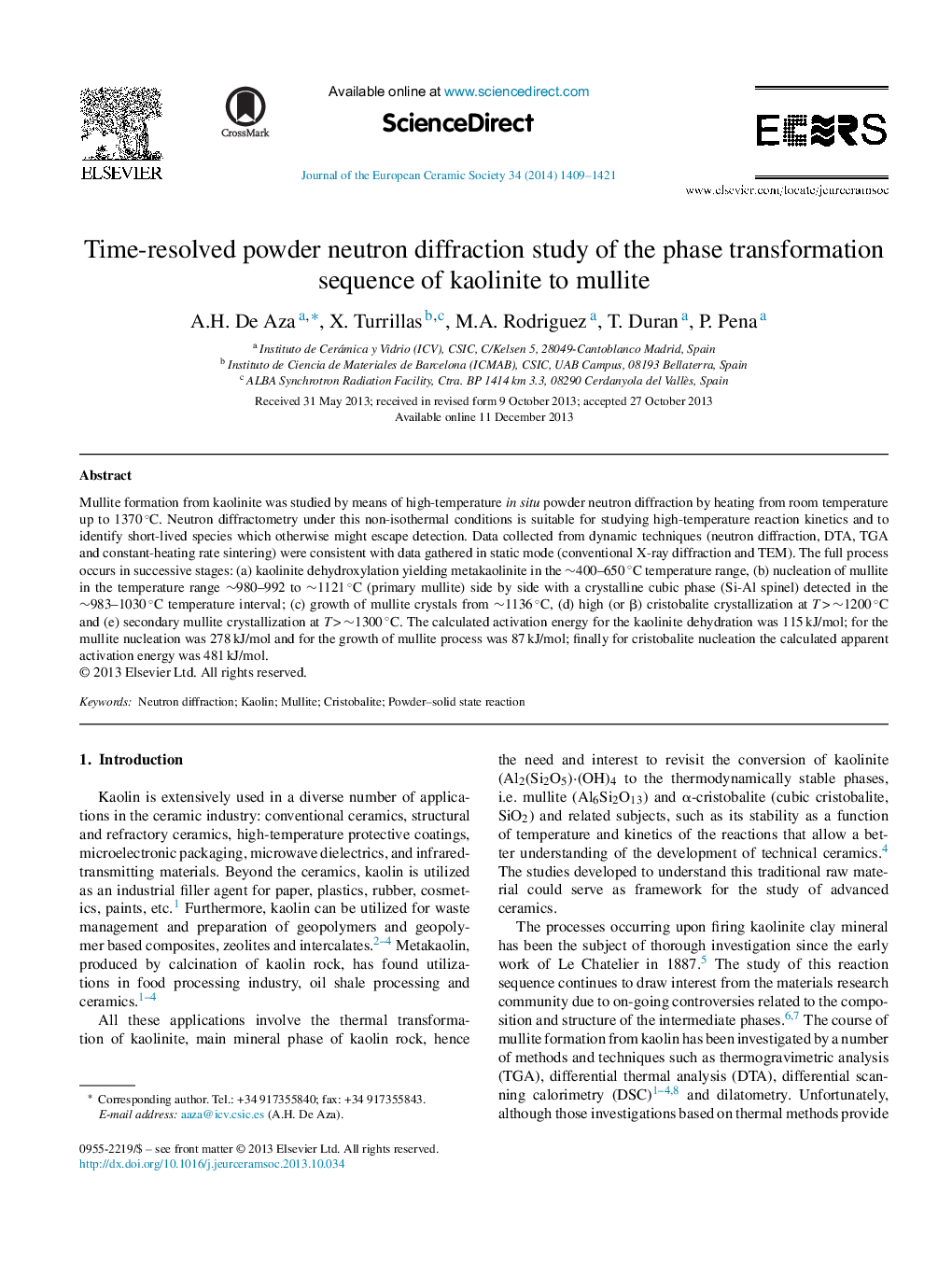| کد مقاله | کد نشریه | سال انتشار | مقاله انگلیسی | نسخه تمام متن |
|---|---|---|---|---|
| 1474414 | 991088 | 2014 | 13 صفحه PDF | دانلود رایگان |
Mullite formation from kaolinite was studied by means of high-temperature in situ powder neutron diffraction by heating from room temperature up to 1370 °C. Neutron diffractometry under this non-isothermal conditions is suitable for studying high-temperature reaction kinetics and to identify short-lived species which otherwise might escape detection. Data collected from dynamic techniques (neutron diffraction, DTA, TGA and constant-heating rate sintering) were consistent with data gathered in static mode (conventional X-ray diffraction and TEM). The full process occurs in successive stages: (a) kaolinite dehydroxylation yielding metakaolinite in the ∼400–650 °C temperature range, (b) nucleation of mullite in the temperature range ∼980–992 to ∼1121 °C (primary mullite) side by side with a crystalline cubic phase (Si-Al spinel) detected in the ∼983–1030 °C temperature interval; (c) growth of mullite crystals from ∼1136 °C, (d) high (or β) cristobalite crystallization at T > ∼1200 °C and (e) secondary mullite crystallization at T > ∼1300 °C. The calculated activation energy for the kaolinite dehydration was 115 kJ/mol; for the mullite nucleation was 278 kJ/mol and for the growth of mullite process was 87 kJ/mol; finally for cristobalite nucleation the calculated apparent activation energy was 481 kJ/mol.
Journal: Journal of the European Ceramic Society - Volume 34, Issue 5, May 2014, Pages 1409–1421
